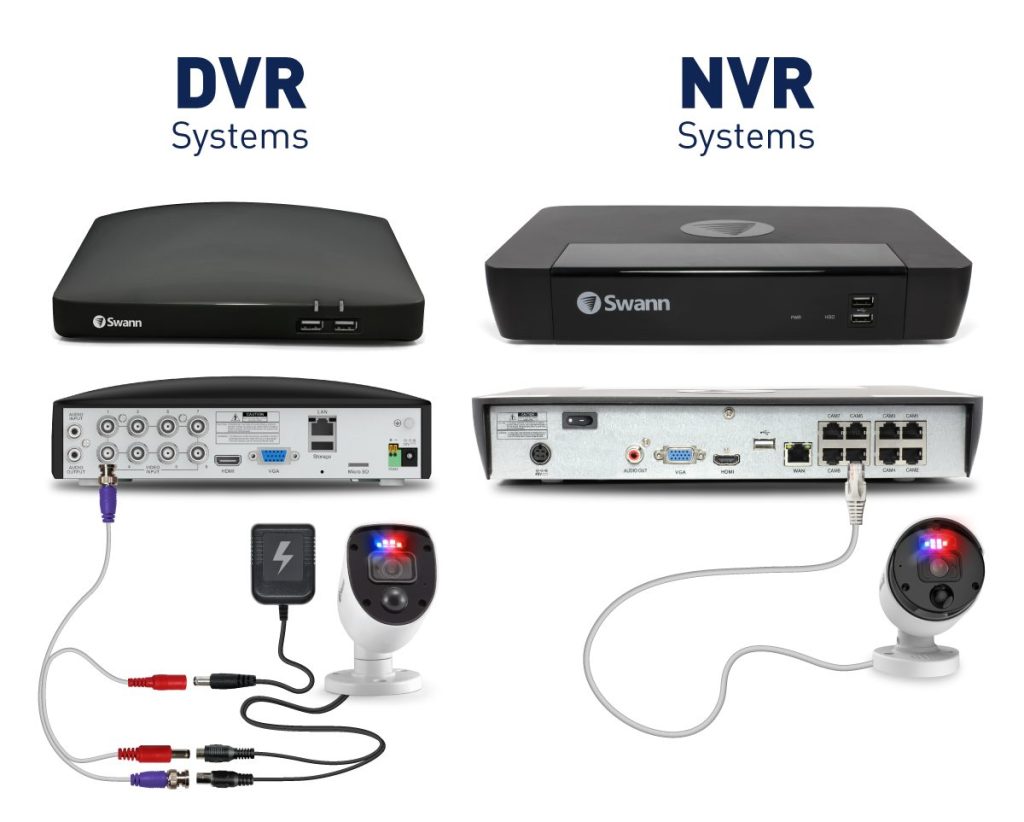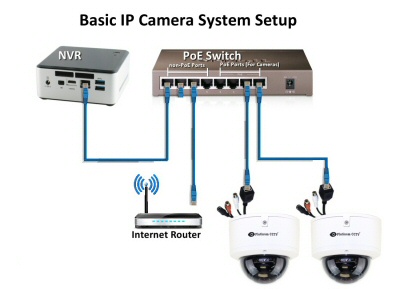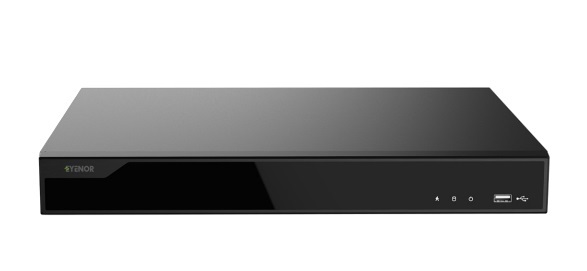Introduction
In today’s world, where everything from our phones to our refrigerators connects wirelessly, it’s natural to wonder: Does a Network Video Recorder (NVR) use WiFi? The answer isn’t a simple yes or no. Let’s dive into the world of NVRs and unravel their network needs.
Table of Contents
- Introduction
- What is an NVR?
- NVR WiFi Connectivity Explained
- Wireless NVR Setups: Pros and Cons
- Connecting IP Cameras Over WiFi
- NVR vs DVR: Wireless Capabilities Compared
- Enhancing NVR WiFi Performance
- Addressing Signal Interference in Wireless NVR Systems
- Smart Home Integration with WiFi-Enabled NVRs
- Setting Up Remote Access for Wireless NVR Systems
- Ensuring NVR Compatibility with Your Router
- Top WiFi NVR Systems in the Market
- Conclusion
- FAQS
What is an NVR?
An NVR, or Network Video Recorder, is like the brain of your surveillance system. It captures and stores video footage from IP cameras over a network. Unlike traditional DVRs (Digital Video Recorders) that connect directly to cameras via coaxial cables, NVRs rely on network connections, offering greater flexibility and scalability.
NVR WiFi Connectivity Explained
Most standard NVRs don’t come with built-in WiFi capabilities. They’re designed to connect to your network using Ethernet cables for stable and high-speed data transmission. However, some modern NVR models are equipped with WiFi, allowing them to connect wirelessly to your router. If your NVR doesn’t support WiFi natively, you can use a USB WiFi adapter or connect it through a wireless bridge.
Wireless NVR Setups: Pros and Cons
Pros:
- Flexibility: No need for extensive cabling; cameras can be placed almost anywhere.
- Ease of Installation: Perfect for renters or temporary setups.
Cons:
- Signal Interference: Walls, furniture, and other electronics can affect performance.
- Bandwidth Load: Multiple high-definition cameras may strain your home network.
Connecting IP Cameras Over WiFi
IP cameras that support WiFi can connect to your wireless network just like a smartphone or laptop. To ensure a smooth experience:
- Choose the right frequency: 5GHz offers faster speeds, while 2.4GHz provides better range.
- Stay within range: Cameras should be placed within a strong signal zone.
Use encryption: Ensure your camera and NVR use WPA2 or higher security.
NVR vs DVR: Wireless Capabilities Compared
DVRs:
- Work with analog cameras.
- Typically don’t support wireless connections without add-ons.
NVRs:
- Use IP cameras.
- Naturally support network-based setups, including wireless configurations.
If you’re building a system without Ethernet, an NVR system without ethernet using wireless cameras is the better choice.

Enhancing NVR WiFi Performance
A solid wireless NVR setup needs more than just a strong signal. To enhance performance:
- Use mesh routers: They expand coverage throughout your property.
- Keep firmware updated: Outdated software can hinder connectivity.
Separate networks: Place your cameras and NVR on a dedicated SSID to avoid congestion.
Addressing Signal Interference in Wireless NVR Systems
Common causes of interference include microwaves, baby monitors, and neighboring WiFi networks. Here’s how to combat them:
- Reposition equipment: Higher and closer is better.
- Use WiFi analyzers: These help identify the best channels.
- Avoid overlapping signals: Reduce the number of devices on the same band.
Smart Home Integration with WiFi-Enabled NVRs
Want to get alerts on your phone or view your footage on a smart display? Many modern NVRs integrate with smart home ecosystems like Alexa, Google Home, or Apple HomeKit. Look for NVRs labeled as smart home NVR solutions for seamless integration.
Setting Up Remote Access for Wireless NVR Systems
Remote access lets you check your footage from anywhere. Here’s a quick setup guide:
- Connect NVR to the internet via WiFi or LAN.
- Install the mobile app recommended by your NVR brand.
- Enable port forwarding or cloud access.
Tip: Always use strong passwords and enable two-factor authentication.
Ensuring NVR Compatibility with Your Router
Before buying an NVR, check if it supports your router’s frequency (2.4GHz or 5GHz). Compatibility is key for stable NVR WiFi connectivity explained in manufacturer specs. Also, make sure your router has enough bandwidth to support simultaneous streaming from multiple cameras.
Top WiFi NVR Systems in the Market
Here are some of the best WiFi NVR systems to consider:
- Reolink RLK8-810B4-A: Known for 4K quality and easy setup.
- ZOSI 8CH NVR: Budget-friendly with solid performance.
- Amcrest NV4108E: Great smart home features.
You can explore these and other compatible devices when you shop ip phone or surveillance gear on Promallshop.
Conclusion
So, does an NVR use WiFi? It depends on the model. Some do, some don’t—but even if yours doesn’t, there are easy workarounds. Whether you’re building a wireless surveillance system from scratch or adding a smart layer to your home security, understanding your NVR’s network requirements can save you a lot of stress down the road.
Ready to build your perfect setup? Dive into our blog at Promallshop for more smart surveillance tips and product reviews.
FAQs
Yes, you can record locally without the internet. However, remote access and cloud features won’t work.
Typically up to 100-150 feet indoors, depending on walls and interference.
Yes, many NVRs allow hybrid setups for maximum flexibility.
Cameras may stop recording if they're WiFi-only. Use local storage or hybrid systems as backup.
Use encrypted connections, strong passwords, firewalls, and regularly update firmware.





